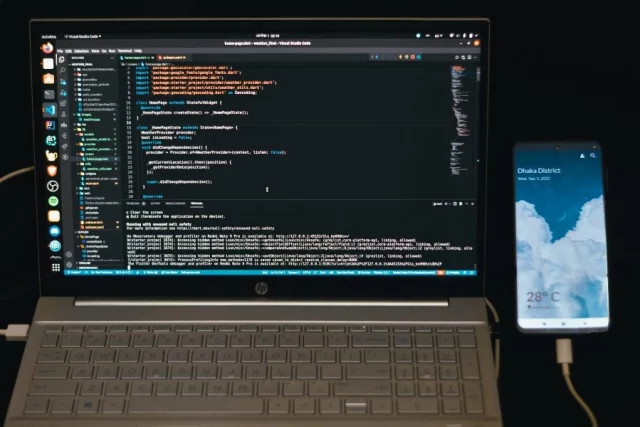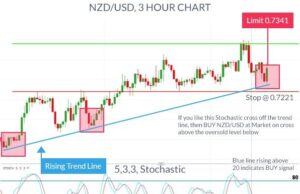Mobile application development is developing an app or software that operates on a mobile device and uses a network or internet connection to interact with remote computing resources.
Mobile apps can assist small, medium, and large businesses in developing brand awareness and monitor business connections. It is an essential method of reaching a larger audience, which increases the likelihood of your company growing to a higher level. So, finding mobile app development services is critical to developing a flawless mobile application.
This article explains the processes involved in developing mobile applications and their stages.
Processes Involved In Mobile Application Development
Growth and success can be attainable if you take advantage of mobile apps. And you must know the processes involved in mobile application development.
If you understand the specifics of the mobile app development process from the start, your experience will be more engaging, with fewer doubts and questions. As a result, understanding the steps involved in developing an app is critical.
The following are the steps involved in developing mobile applications.
Strategic Planning
The application’s objectives, functionality, and business model are strategically planned in the first stage of creating a mobile app.
It involves:
- The goal of your App
- Objectives
- Selecting Platforms
- Identifying your competitors
The goal of your App: It possesses the type of App you’re making and its purpose. For example, you’ll want to combine in-app advertising with subscriptions and in-app purchases to create a gaming app.
Or, you could create a lending app to handle your users’ application procedures, data, and payments based on your application’s goal.
Objectives: This section identifies the App’s main goals, including the App’s results to achieve, problems to solve, and others.
Selecting Platform: The decision on which platform to build your tool is part of the strategy phase, whether you require a cross-platform app, an iOS app, or based on an android solution.
Identifying your Competitors: This stage focuses on your company’s internal and external competitors. You can identify weak points and errors in the industry by carefully observing how your competitors perform in the market.
Evaluation and Planning
At this point, your idea, research, and goal are composed together. The process includes determining your app’s requirements and the skills required for your mobile app development action plan.
User Interface (UI) and User Experience (UX) Design
The design of an app must be implemented carefully for users to have the best experience possible. If your app isn’t user-friendly or has bugs, users will likely abandon it.
Your User Interface and User Experience must be engaging, seamless, bug-free, and straightforward. The elements of this process are as follows:
Wireframes: These conceptual layouts serve as a visual framework for your app’s functionality. It prioritizes aesthetics and user experience regardless of the platform you build (iOS or Android).
Workflows and Data Design: This entails developing rules as part of the data design. Its purpose is to build how the data displayed on your app, the collection of user data, and the user’s experience within the app. A diagram is used to monitor and track user interactions.
Style Guides: This document contains the company’s branding on a single page to maintain consistency throughout your app. A color palette, widgets, buttons, spacing, positioning, and other relevant designs were all present.
Mockups: This is the final stage after applying the style guides and wireframes. Expect additional workflow, data design, and aesthetic changes as your app’s designs are near completion.
Prototypes: It allows you to stimulate both the workflow and the UX design. It is a time-consuming process, but if done correctly, it can help you identify functional errors that you are likely to fix.
Application Development
The typical app development process has three main parts: the backend, API (Application Programming Interface), and the front end.
Backend: The backend phase influences how scalable your application will be. It entails creating databases and a server in charge of your app’s functionality.
The software engineers will select the appropriate computer languages during this phase and begin coding the app. They will also choose the hosting server and database engines.
API: The Application Programming Interface refers to the interaction between the backend server and the App. It enables businesses to build a secure data transfer interface between mobile applications’ backend and front ends.
Front-end: The front-end is what the user sees and uses. The three ways to build it are as follows:
- Cross-platform
- Hybrid
- Individual Platform
Testing
After the App’s development, it’s time to test the mobile App you are building. For thorough testing, your App should undergo five testing methods before deployment.
Performance: During performance testing, it focuses app responses to more users.
Functionality: Test the App features.
Security: This focuses on the data privacy of the consumers. Data security is critical when developing highly regulated business solutions such as mobile insurance and healthcare apps.
Device and platform: Your App must be compatible with new mobile devices and OS updates. It tests on a variety of devices or simulation software.
In-Depth Review: Test your App with end users before deploying it. The key is to gather more feedback, whether through a group discussion or the beta release of an app.
Deployment/App Launching
The final stage of an app’s launch or deployment will go through various distribution models based on the platform used. You can send your App to Google Play or Apple’s App Store or opt for private distribution for review.
Monitoring and Refinement
The monitoring and refinement stage is where the App is under monitoring. It will go through user feedback and user interaction with the App.
The following are some of the few KPIs you should consider:
- Application Downloads
- Actual users
- Typical visit duration
- Client lifetime value
- Ratings
- Reviews
You can use analytics tools to monitor KPIs based on your goals. Over time, you’ll gather data that will help you optimize your product.
Mobile App Development Services are Essential
With billions of mobile phone users worldwide, even a simple application has the potential to grow your business significantly. Experts in mobile app development can assist you in transforming your app concept into exceptional mobile applications for cross-platforms, Android, or iOS.














